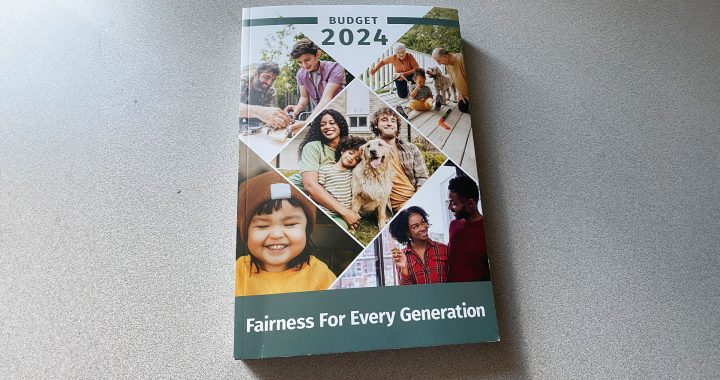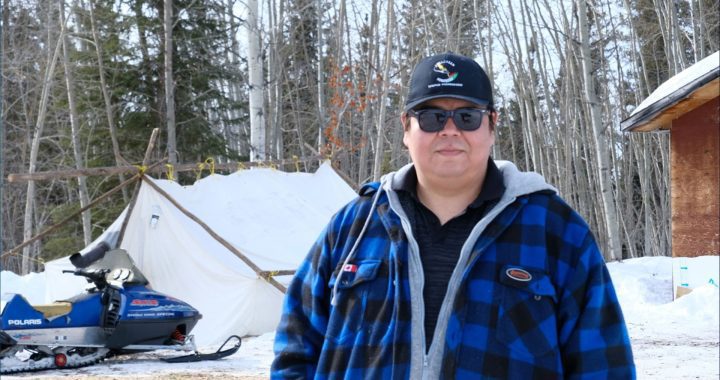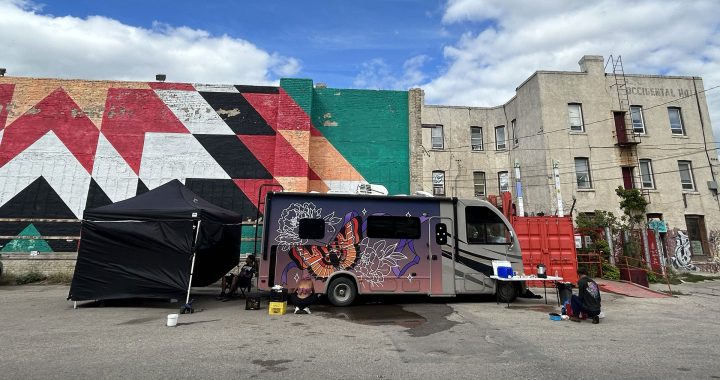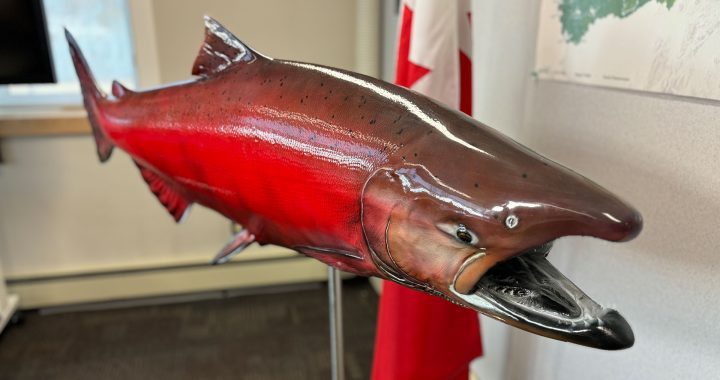Following a successful pilot project initiated last year, regional police officers with the Nunavik Police Service in Northern Quebec will be equipped with body-worn cameras by fall 2021.
But following a surge of racial profiling allegations against other police forces in Quebec, activists and municipal leaders are debating whether mandating use of body cams will present solutions, or create more problems for forces further south.
Last week, APTN’s Nouvelles Nationales brought forward the story of two Innu men from Pessamit who say they were left traumatized by a false detainment by Quebec provincial police.
They were stopped at gunpoint by Surete du Quebec while driving on ancestral territory – and eventually released with apology when officers were told they had the wrong men.
However, the incident itself was so jarring that the men took several weeks before speaking about it on the record.
“[Headquarters] said ‘they’re not the ones we’re looking for.’ And I was so happy,” Luc Picard explained in Innu. “It’s like when an over-inflated balloon gets deflated again. That’s how I felt. I was sweating.”
“I’m still scared,” he added.
The incident caught the attention of both Quebec’s Indigenous Affairs Minister, and the BEI – which investigates in situations where a civilian is injured or killed during a police intervention.
Also subject of two independent police investigations is a recent incident of alleged racial profiling now known as the “Camara affair.”
Mamadi Camara, a 31-year-old black PhD student and expectant father, was arrested Jan. 28 after a Montreal police officer was allegedly disarmed and attacked with his own service weapon during a traffic stop.
Camara was originally charged with attempted murder and other serious offences before being fully exonerated.
He recently told Quebec talk show “Tout le monde en parle” that he had been traumatized by the events, which included being roughly arrested and forbidden to speak to his family while detained.
Camara said he felt the guards perceived him as a “monster” after his arrest, which his lawyer said happened after he witnessed the assault on the police officer and called 911.
The incident prompted Montreal’s opposition parties to call for mandated use of body cams for all SPVM officers.
“It’s time to stop playing games,” Opposition leader Lionel Perez said in a press statement. “For two years we’ve been asking the Plante administration to act on this matter, [and] each time, all we’ve gotten are excuses.”
The opposition presented a motion in support of body cams during the Feb. 22 session of Montreal Municipal Council, stressing that “many American studies have identified a significant decrease in the use of force in police enquiries and associated complaints when police officers wear body cameras.”
In the end, the motion did not pass – but some advocates insist body cam evidence can be critical when reviewing cases of alleged racial profiling.
“Body cams for police officers are not just about technologies and budget. It’s about changing police practices,” explained Fo Niemi, Executive Director of the Centre for Research-Action on Race Relations (CRARR), a Montreal-based civil rights organization that handles racial profiling complaints against police and other public bodies.
“[It’s about] changing police behaviours and conduct, enhancing democracy, enhancing transparency. And the cost of not having accountability, not changing police practices and conduct can eventually cost us much,” Niemi added.
However, not all advocacy groups are on-board.
The Defund the Police Coalition MTL, for example, opposes the use of body cams because it would mean increasing the SPVM’s annual operational budget.
Instead, they favour re-distribution of assets to community-based organizations and mental health resources.
“We spend a lot of time digging into the research. In the last five years there’s been a lot of new research. And sadly, I think the research is not being talked about right now,” explained Justin Doucet, a freelance journalist who recently co-authored an op-ed in the Montreal Gazette.
The piece examines how study data compiled over the last few years shows that body worn cameras are not the “total package” solution they’re perceived to be.
“What we’re doing with these cameras is that we’re actually putting a tool in the hands of the police, and what we’ve been asking for is to put tools in the hands of the citizens,” Doucet told APTN News.
“Yale university, they published a study in 2016 – and they found that jurors, when presented with video evidence of alleged police misconduct, they were no more likely to decide against the officer then if they were presented with non-video evidence – for example, the testimony of the victim,” Doucet explained.
“So that tells us in the judicial process, if a defendant or complainant even had access to police footage from a body cam, and could present it in court, this kind of evidence doesn’t carry the weight we think it does,” he added.
But officers with the Nunavik police service insist that using body cameras during certain police calls is a “win-win” situation.
“It helps with both sides,” explained Capt. Maxime Mercier, who oversaw the body-cam rollout during the initial pilot project in 2020.
Mercier admits that outcomes can be hard to measure, but points out that he’s seen use of force complaints in the community of Kuujjuaq reduced by nearly half in the community over the last year.
“I spoke to many other police forces that want to have body cams, and I always say the same thing: start small to see all the problems you’re going to face,” Mercier added.
“In the end, the technology is there. It’s much better than it was before. And that’s why pilot projects from 10 years ago didn’t work, because the technology wasn’t the same.”
Mercier insists unclear usage guidelines will only complicate the roll-out process for other forces.
In Nunavik, for example, Mercier says the body cam guidelines are “pretty clear” – officers are required to record any calls regarding violence, impaired driving, or other “extraordinary circumstances.”
Filming is prohibited in cases where there is nudity or privacy concerns, as well as in hospitals or churches, and Mercier says all officers are required to fill out written reports to contextualize the footage collected.
“If there’s too many rules about what the officer can and cannot record, that’s when it gets messed up. The officers aren’t going to use it properly,” he added.
“When it’s simple and straightforward, that’s when it’s going to work well.”
Others, however, remain unconvinced of the overall benefits.
“Indigenous, Black, and brown communities are already over-surveyed, and over-policed, and their safety is not being addressed in this conversation,” Doucet said.
“We need to stop looking for quick fixes, and we need to start asking fundamental questions of what makes a safer society for Indigenous people and for racialized communities,” he added.
-With files from The Canadian Press









